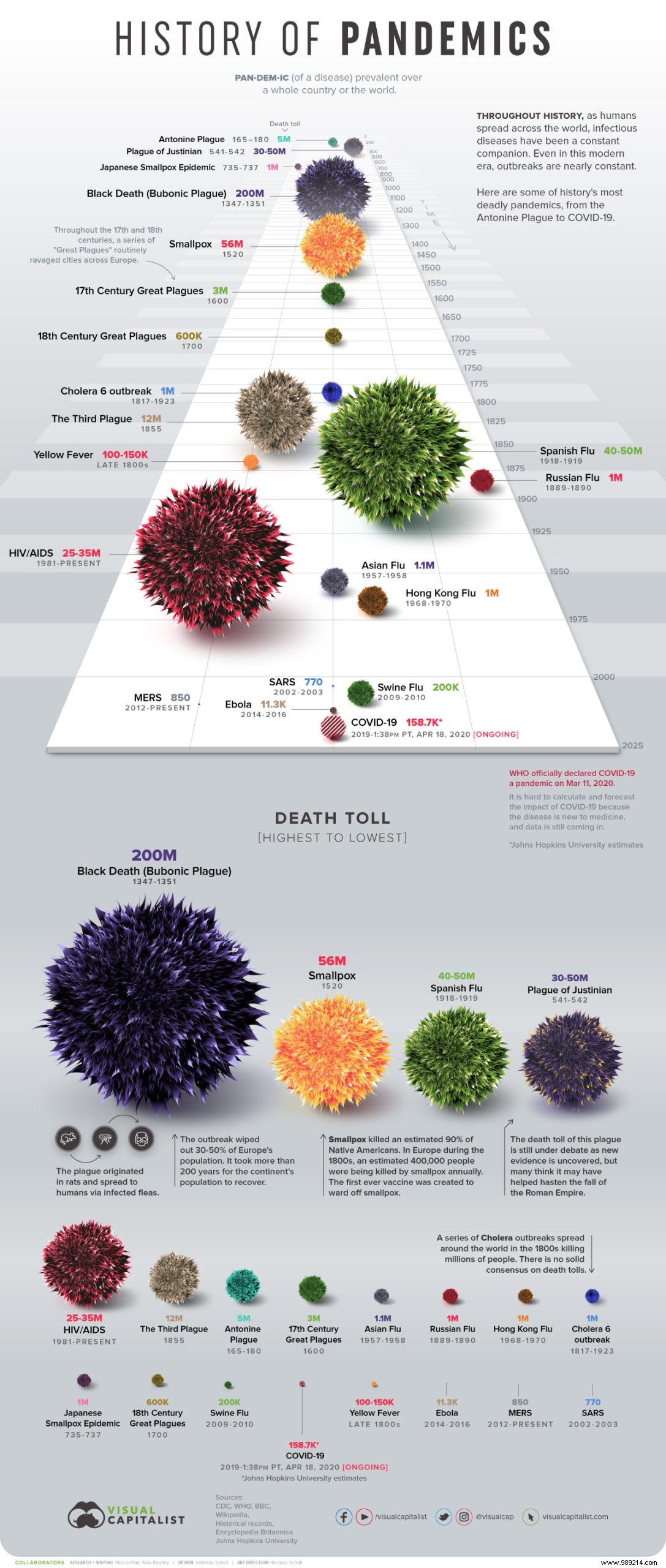From the Antonine plague to Covid-19, via the Spanish flu, here are the major pandemics that have marked the history of our species.
Infectious diseases causing epidemics and pandemics did not wait for "globalization" to spread. Most often transmitted by viruses or bacteria, they sometimes inflict real demographic drain on us. Certainly, these episodes have accompanied us for millennia. However, it is noted that the spread of these diseases has increased considerably as trade has become widespread.
On the other hand, thanks to our increasingly important knowledge in virology and bacteriology, but also thanks to the improvement of health care, they seem today less deadly than before (even if some diseases that are still uncontrolled still claim a lot of victims).

The list below names the most common pandemics important in history. It emphasizes each time its origin (and sometimes the intermediate host) and the human toll:
Note:the estimates listed above are based on available research. Some, like the plague of Justinian and swine flu, are still debated.

Most of these pandemics originate from zoonoses (diseases transmitted between humans and animals). And we now know that these emergences are closely linked to environmental changes. Indeed, the more space we grab, the closer interspecies relationships become.
The tanks actually seem to be concentrated only in certain areas (China, Africa). However, let us remember that our world is now governed by international trade. This is why pathogens are able to spread quickly. The health event that we are currently experiencing is therefore not really surprising, even if its scale is still very impressive.
If we continue to adopt the same behaviors, it is therefore certain that other crises of the same type will take place in the future. The emergence of another virus could indeed very well occur tomorrow, or next year. This is why it is imperative that we become aware of the close links between our activities and health problems . Only then can we find sustainable solutions if we want to reduce these risks .
Source